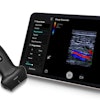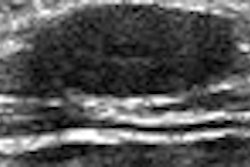At the 2006 Society of Radiologists in Ultrasound (SRU) meeting in San Francisco, expert speakers offered an overview of the current state of sonography. One of their central concerns was that radiology is losing control of sonography. But the truth is that no one single medical specialty has ever "controlled" sonography.
Sonography exploded into modern medicine in the 1970s, establishing itself in abdominal, ob/gyn, and cardiac imaging ("Early use of ultrasound for a medical purpose," ObGYN.net; "A Short History of the Development of Ultrasound;" "Inge Edler and Carl Hertz, history of ultrasonography," Lunds Universitet).
Sonography is now literally everywhere in hospitals, clinics, laboratories, and private practices. However, the presentations at the SRU meeting took a very limited view of how sonography is actually used, at least in the U.S.
The SRU conference did not include any discussion of the role of the more than 50,000 registered sonographers who have not only operated the equipment, but consulted with physicians on that diagnostic information for the past 35 years. (A talk on the future role of the sonographer was scheduled at the SRU meeting, but presenter Dr. Philip Ralls was unable to attend.)
The undervaluation of sonographers isn't limited to a single SRU meeting. Historically, the radiologists of SRU have ignored the existence of this very important segment of the medical team. The SRU does not admit nonphysician sonographers as members, whereas other organizations -- the American Institute of Ultrasound in Medicine (AIUM), the Society for Diagnostic Medical Sonographers (SDMS), to name a couple -- have welcomed all members of the sonographic diagnostic team.
Taking the lead
The fact is that sonography is the most operator-dependent diagnostic modality in modern medicine. The psychomotor skills of sonography that must be developed are extraordinary if the machine is not to be a barrier between the operator and the patient. The successful sonographic operator must become so intimate with the machine that the scanning becomes second nature in the focus on the image and the patient, without the need to fumble with controls. The need to integrate operator and machine has been recognized since the earliest days of sonography.
In a 1985 article on the legal aspects of diagnostic ultrasonography, Dr. A. Everette James and colleagues stated: "Many ultrasound examinations are performed by technologists [sic] when a physician is not present, and a report is issued by a physician at a later time. The legal responsibilities are extraordinary because a necessary part of care may involve rendering an interpretation at the time the study is performed, especially if real-time instrumentation is used. This differs from the relative roles of technologists and physicians in other imaging disciplines" (Seminars in Ultrasound, CT, and MR, June 1985, Vol. 6:209).
Ultrasound pioneer Dr. Roy Filly once wrote: "It is embarrassing to me as a sonologist and greatly to the credit of sonographers that they have taken the lead on qualifying examinations. The American Registry of Diagnostic Medical Sonographers conducts a comprehensive examination that, in my opinion, would be failed dismally by many physicians who 'practice' sonology" (Journal of Ultrasound in Medicine, March 1998, Vol. 17:3, p.156).
More recently, Dr. Harris Finberg proposed making sonographers into physician extenders. In a speech delivered at the Los Angeles Radiological Society's Spring Diagnostic Ultrasound Conference, Finberg suggested the creation of a sonographic practitioner designation that would be analogous to the nurse practitioner or nurse anesthetist. A sonographic practitioner would be able to function independently within defined areas of responsibility, including rendering diagnoses and generating reports, he said.
"In sonography, the image acquisition is complex and operator-dependent, and it becomes the diagnostic process. The subsequent reading confirms the completeness of the examination and validates the diagnosis but generally cannot go beyond the provided images. Thus, in large measure, the one who holds the transducer makes the diagnosis," Finberg wrote (JUM, December 2004, Vol. 23:12, pp. 1543-1547).
Overdue recognition
At the SRU meeting, several speakers did mention sonographers in passing, but not necessarily in a positive way. Dr. John Cronan claimed that many radiologists now train sonographers to perform and interpret ultrasound exams. Those same sonographers then leave the imaging facility and take up high-paying jobs at nonradiology practices, he said.
Other specialties -- obstetrics, vascular surgery, cardiology -- have given sonographers the recognition and responsibility that they deserve -- and that are often missing in the radiology suite. This may be one reason that sonographers leave radiology for "greener pastures" after they gain work experience.
In another talk, Dr. Harvey Neiman said that U.S. radiologists have the reputation of wanting to concentrate on more sophisticated, creative imaging, which leaves a host of less interesting studies that are being sent for overseas reads. Wouldn't it make more sense to keep the work "in-house" and have skilled sonographers perform and read these exams?
The intent here is not to suggest that physicians cannot develop the needed skills for sonography. Instead, I would like to point out that it is usually more cost-effective, and results in better healthcare, if the individual performing the sonogram is properly acquainted with the equipment. This is particularly true in very large hospitals and institutions with many makes and models of sonographic machines.
A physician who is perfectly comfortable scanning on their machine in their office may be at a total loss when trying to scan on one of the many machines in a large institution. Nothing seems to make physicians -- or patients for that matter -- more uncomfortable than looking as if they do not know what they are doing.
The best interpreting sonologists who I have worked with over the last 30 years usually take the images and sonographer's assessment of the case into consideration; and in complex cases where they need to actually observe real-time, they ask the sonographer to show them and discuss the case as the scan proceeds. It has been very rare in my experience that the physician would actually need to scan.
Because sonography spread so rapidly throughout medicine, there was no one to look out for sonographers' interests. But sonographers have always played a central role in diagnosis. Unfortunately, radiologists have generally ignored that role, pretending that the sonographer was simply another version of a technologist.
In actuality, sonographers are anatomists who can aid in diagnosis if they are encouraged to do so. They can provide good diagnostic results for physicians quickly and economically if their skills are properly utilized. Rather than lamenting the loss of sonography to other specialties, physicians should look to cultivate sonographers, which would not only address the personnel shortage in radiology, but would keep sonography in the hands of imaging experts.
By Terry J. DuBose
AuntMinnie.com contributing writer
February 6, 2007
Terry DuBose is an associate professor and director of the diagnostic medical sonography program at the University of Arkansas for Medical Sciences in Little Rock. He is the chairman of the ultrasound editorial advisory board at OBGYN.net and is a fellow in the American Institute of Ultrasound in Medicine and the Society of Diagnostic Medical Sonography.
The opinions expressed in this guest editorial are those of the author, and do not necessarily reflect the views of AuntMinnie.com.
Related Reading
Head and neck surgeons can handle ultrasound, journal article says, January 1, 2007
U.S. government issues update on WRMSDs in sonography, December 25, 2006
The future of ultrasound: Used by many, understood by few, October 27, 2006
3D brings opportunities to sonographers, August 4, 2006
Radiology extenders -- the answer to the RT personnel shortage? September 19, 2002
Copyright © 2007 AuntMinnie.com



















